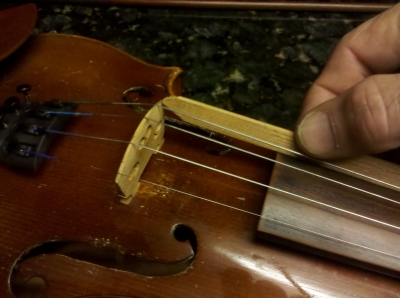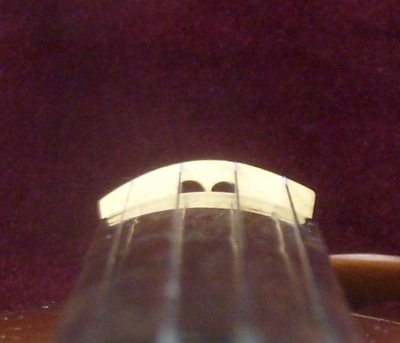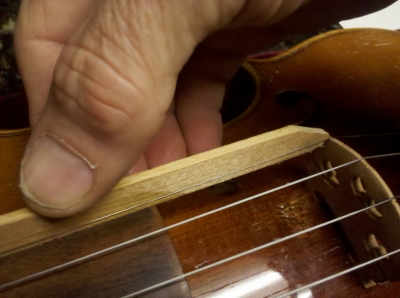Welcome to our forum. A Message To Our New and Prospective Members . Check out our Forum Rules. Lets keep this forum an enjoyable place to visit.
Check out our 2023 Group Christmas Project HERE
 Topic RSS
Topic RSS



 (1 votes)
(1 votes) Member
 Offline
OfflineRegular advisor
Regulars
 Offline
OfflineHello
Please, let us know of the action (or relief) you've got in those areas up there. Meaning the distance between the string and the fingerboard, and the same distance, where the fingerboard ends. Something close to 3.5 mm is expected up there in the E string. That way we may eliminate a set up issue
Also, is there any chance you've got a really heavy/stark tension/gauge e string mounted? Or a particularly old one? Or a wound one?
Does this happen in the G string as well? Any chance of an incorrectly scooped fingerboard?
We have to pay attention to this issues first I guess, to avoid fatigue and injury 
Now let's suppose that everything above is ok,
Many strings could possibly work without been pressed all the way down to the fingerboard, especially e strings "up there". Up there, I relocate my fingers according to where my thumb rests to "find my way" and avoid getting lost. And sometimes, all it takes is a little pressure on the string maybe without touching the fingerboard in those really really high position, depending on the string, the player and the instrument. The weird sound you mention, could be caused by the string being pressed over it's limits. You could experiment with your bow contact point, and play where it feels less tense, and see what happens.
If still nothing happens, everything is okay with the set up, and you are sure that it's the string's fault, change the string type, or move to lower tension. After all, it's all a matter of taste 
here are some I found softer to the left hand than others
Thomastik Infeld Vision titanium Orchestra E
Pirastro Gold label Wondertone E
Pirastro Obligato gold plated E
And another two that I have not used before but their tension seems remarkably lower imho
Fiddlerman E String
Warchal Amber E
Member
 Offline
OfflineIs your bridge too high for the fingerboard? My previous violin had an absurdly high bridge that, whenever I tried to go above first position (or heck, even IN first position), the strings would cut into my fingers any time I'd press them. I didn't know it at the time, but I'm pretty sure somebody just ordered a standard bridge and put it on the violin without even carving or sanding anything down to make it fit the instrument.
If you can, take it to a luthier and see what they have to say. Otherwise, you might just need to develop some calluses on your fingertips (gah, what a painful procedure!) and work your way slowly up to the higher positions. Still, hope the luthier can fix whatever's the matter!!
Regulars
 Offline
OfflineI second what ladyeclectic said, I have one violin like that with a way to high bridge and going up in an even slightly higher position like 3rd just sounded awful, I only recently found out (thanks to this forum) that the bridge was to high.
I now have a second (cheapy) violin and the bridge is much lower, doesn't hurt my fingers as much and it sounds better also.
It's easy to play any musical instrument: all you have to do is touch the right key at the right time and the instrument will play itself. Johann S.Bach
1 Guest(s)


 Log In
Log In Register
Register Home
Home






 time.. a good violin and string...
time.. a good violin and string... 












